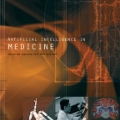Image translation methods typically aim to manipulate a set of labeled attributes (given as supervision at training time e.g. domain label) while leaving the unlabeled attributes intact. Current methods achieve either: (i) disentanglement, which exhibits low visual fidelity and can only be satisfied where the attributes are perfectly uncorrelated. (ii) visually-plausible translations, which are clearly not disentangled. In this work, we propose OverLORD, a single framework for disentangling labeled and unlabeled attributes as well as synthesizing high-fidelity images, which is composed of two stages; (i) Disentanglement: Learning disentangled representations with latent optimization. Differently from previous approaches, we do not rely on adversarial training or any architectural biases. (ii) Synthesis: Training feed-forward encoders for inferring the learned attributes and tuning the generator in an adversarial manner to increase the perceptual quality. When the labeled and unlabeled attributes are correlated, we model an additional representation that accounts for the correlated attributes and improves disentanglement. We highlight that our flexible framework covers multiple settings as disentangling labeled attributes, pose and appearance, localized concepts, and shape and texture. We present significantly better disentanglement with higher translation quality and greater output diversity than state-of-the-art methods.
翻译:图像翻译方法通常旨在操纵一组标签属性( 在培训时间作为监管( 如域标签), 并保持未标的属性的完整。 当前的方法可以实现 :(一) 分解, 显示视觉忠诚度低, 只能在属性完全不相关的情况下才能满足 。 (二) 视觉可视化翻译, 显然没有分解 。 在这项工作中, 我们提议 OverLORD, 是一个分解标签和未标的属性以及合成高异性图像的单一框架, 由两个阶段组成 ;(一) 分解: 学习与潜在优化相异的表达方式。 不同于以往的方法, 我们并不依赖对抗性培训或任何建筑偏差 。 (二) 合成: 培训反馈- 向导导, 以对抗性方式调整生成器, 以提高感知性质量。 当标签和未标的属性相互关联时, 我们建模一个额外的表达式, 以关联性属性、 改善变异性、 变异性化的图像 。 我们强调, 我们的配置方式, 以不动性化 格式 格式 。



